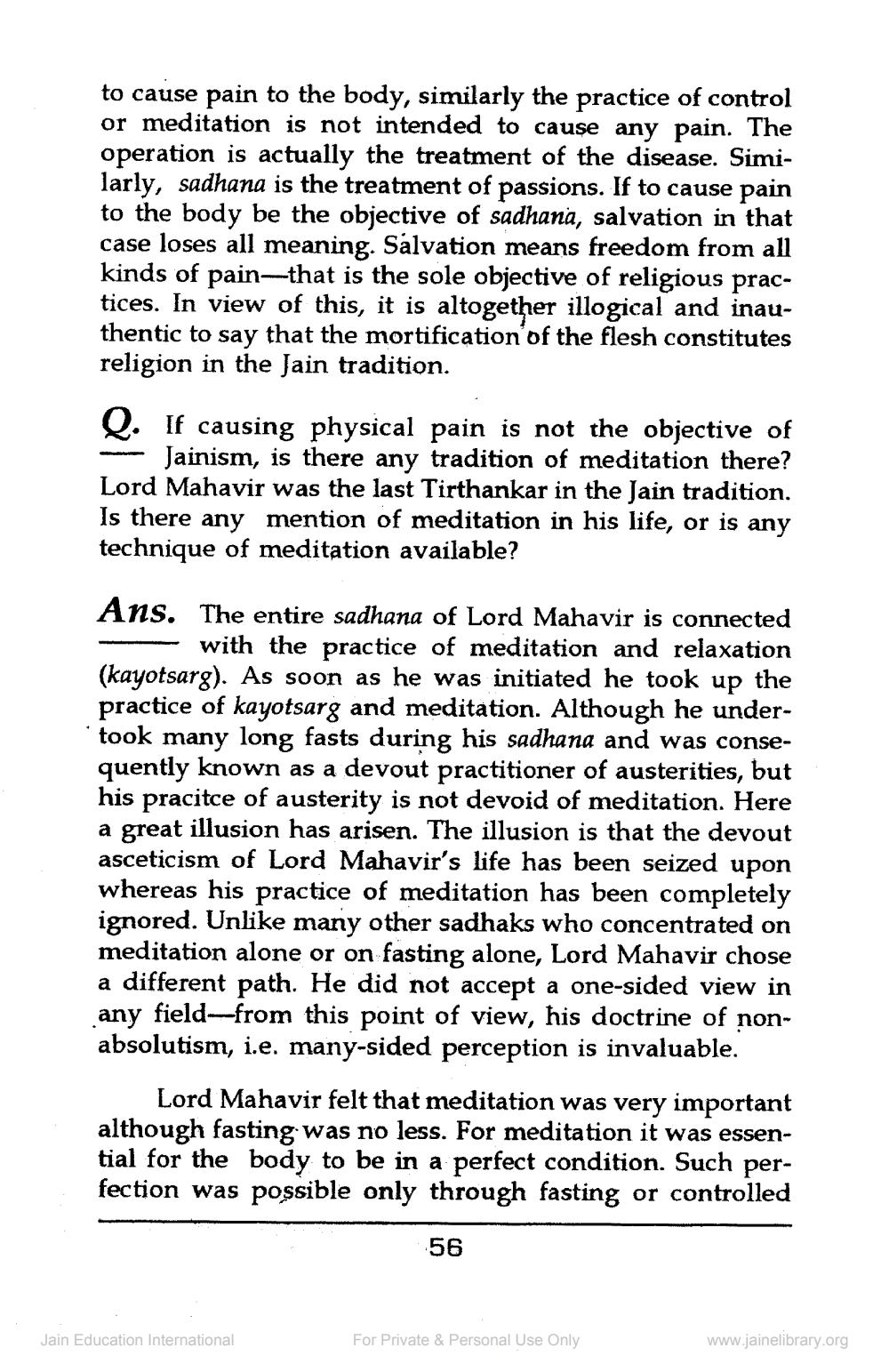________________
to cause pain to the body, similarly the practice of control or meditation is not intended to cause any pain. The operation is actually the treatment of the disease. Similarly, sadhana is the treatment of passions. If to cause pain to the body be the objective of sadhana, salvation in that case loses all meaning. Salvation means freedom from all kinds of pain-that is the sole objective of religious practices. In view of this, it is altogether illogical and inauthentic to say that the mortification of the flesh constitutes religion in the Jain tradition.
Q. If causing physical pain is not the objective of Jainism, is there any tradition of meditation there? Lord Mahavir was the last Tirthankar in the Jain tradition. Is there any mention of meditation in his life, or is any technique of meditation available?
Ans. The entire sadhana of Lord Mahavir is connected with the practice of meditation and relaxation (kayotsarg). As soon as he was initiated he took up the practice of kayotsarg and meditation. Although he undertook many long fasts during his sadhana and was consequently known as a devout practitioner of austerities, but his pracitce of austerity is not devoid of meditation. Here a great illusion has arisen. The illusion is that the devout asceticism of Lord Mahavir's life has been seized upon whereas his practice of meditation has been completely ignored. Unlike many other sadhaks who concentrated on meditation alone or on fasting alone, Lord Mahavir chose a different path. He did not accept a one-sided view in any field-from this point of view, his doctrine of nonabsolutism, i.e. many-sided perception is invaluable.
Lord Mahavir felt that meditation was very important although fasting was no less. For meditation it was essential for the body to be in a perfect condition. Such perfection was possible only through fasting or controlled
Jain Education International
56
For Private & Personal Use Only
www.jainelibrary.org




